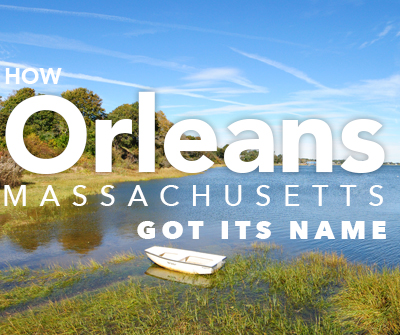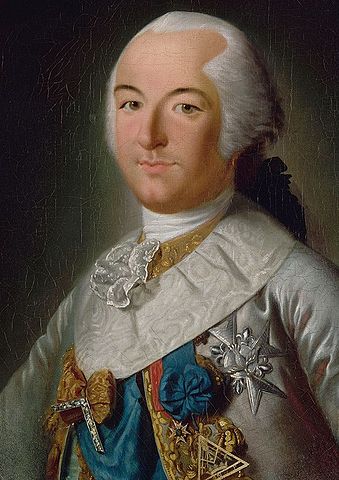Blog / Did You Know? / How Orleans, Massachusetts Got Its Name

Have you ever wondered how Cape Cod ended up with a town called Orleans?
After all, the Cape's other towns feature names of English and Native American origins, but Orleans is clearly a French name, making it an outlier because the French never settled here.
The story goes all the way back to when the Mayflower landed on what is now Provincetown Harbor on November 11, 1620, and continues until the town of Orleans' official incorporation in 1797.
Let's have a look at how Orleans was formed and ultimately got its name from France's Duke of Orleans.
The Mayflower Pilgrims Visit Cape Cod
While Plymouth Rock gets much of the attention for being where the Mayflower ultimately ended its voyage, the Pilgrims actually landed on Cape Cod before heading to the mainland.
However, most of the ship's passengers didn't set foot on the Cape. The boat stayed anchored in Provincetown Harbor for about a month before carrying on, with the majority staying onboard.
During that time, however, three separate explorations headed to the area that makes up present-day Eastham, Orleans, and Wellfleet to see what they could find.
The third, and most significant, exploration was the third one, which started on December 6, 1620, and was led by Governor John Carver, future governor William Bradford, and Myles Standish. This particular exploration is referred to as the First Encounter, as it was when the Pilgrims came into contact with the Nauset tribe, headed by sachem Aspinet.
There was some hostility during this first meeting between Europeans and the Nauset tribe because the Pilgrims stole corn from some nearby fields to avoid starvation.
Shortly after this meeting, the Pilgrims returned to the Mayflower and continued their journey to Plymouth.
Some Pilgrims Leave Plymouth for the Cape
After settling in Plymouth, the Pilgrims didn't forget about Cape Cod, sending people there on multiple occasions to explore and set up trade agreements with Native American tribes.
One such expedition occurred in July of 1621 after a young boy named John Billington wandered from his home. He was soon found by a Native American tribe near Plymouth and transferred to the Nauset tribe on Cape Cod.
A Pilgrim party led by William Bradford was able to recover the unharmed boy and make peace with the Nauset tribe by compensating them for the corn they took the previous winter.
Creating peace between the Nausets and Pilgrims would open up the door for the Plymouth Colony to expand in the future.
Setting Up Eastham
By 1644, some settlers were unhappy with the lack of fertile land and fresh water at Plymouth, and, therefore, considered relocating to Cape Cod. A committee led by Governor Bradford explored the Nauset area - which is now Wellfleet, Orleans, and Eastham - but ultimately decided that it was too small to accommodate the colony's rapidly growing population.
Although the idea of relocating the entire Plymouth Colony was abandoned, a group of seven freemen, including Nicholas Snow, John Doane, Thomas Prence, and Richard Higgins, set out to establish a new town on Cape Cod for the colony.
The Plymouth Colony purchased the land from the Monomoyick and Nauset tribes, and 49 people made the move, with the town becoming official in 1645, and being named Eastham in 1651.
Keep in mind that other towns, such as Sandwich, Barnstable, and Yarmouth, had already been established on other parts of Cape Cod, but Eastham was the first town to come from the Plymouth Colony.
The Establishment of Orleans
Eastham would undergo some changes over the years, with Wellfleet separating in 1763. Still, for the next 152 years, Eastham and present-day Orleans remained a single town, although their populations became increasingly segregated over time.
By 1717, for example, the north and south portions of the town were operating independently of each other, with their populations having different ideologies and demographics.
Finally, on March 3, 1797, Governor Samuel Adams signed a piece of legislature stating that the two portions of Eastham should become separate, with the south part taking the name Orleans.
At that time, Orleans had about double the population of Eastham, and quickly organized its local government, while also creating a boundary with the neighboring town of Chatham.
Why the French Name?
So, how did Orleans end up with this name?
Well, at this point in history, there was a very active pro-French sentiment throughout the newly-formed United States of America, thanks in large part to the assistance that France provided during the American Revolution. Starting in 1775, the French government began shipping supplies to the Continental Army and would provide ammunition and financial aid throughout the war.
France also formally recognized the United States as a country on February 6, 1778, helping to legitimize its fight for independence, and sent troops to assist in war efforts between 1778 and 1781.
Furthermore, during the Revolutionary War, an Eastham resident named Isaac Snow was captured by the British twice and finally sent to a prison ship off the coast of Great Britain. Snow would later escape the prison and make his way to France, where he became aware of Louis Philippe Joseph d'Orléans, also known as the Duke of Orleans.
The Duke of Orleans was one of France's richest men and the cousin of King Louis XVI. He was also one of the leaders of the French Revolution, however, fighting directly against members of his royal family and attempting to end the country's monarchy. As a result, Snow had great admiration for the Duke of Orleans, seeing him as a central figure in the fight for freedom.
The French Revolution would eventually overthrow France's monarchy, helping to create our current democratic system.
It took years, and his family had deemed him lost, but Isaac Snow eventually returned to Eastham with some help from Marquis de Lafayette, who was a central figure in both the French and American revolutions.
With the southern part of Eastham looking for a name, Snow, now a highly respected war hero, suggested Orleans because of his admiration for the Duke of Orleans.
So basically, the area's pro-French and anti-British attitude during this era, along with returning war hero Isaac Snow's personal experiences in France, are the reasons why Cape Cod now has a town called Orleans.
Part of the Cape's Great History
In the end, Orleans is named after a man who likely never set foot on North American soil and has no direct link to the area as a whole.
The reality is that Orleans ended up with this name because of the ideology that Louis Philippe Joseph d'Orléans represented by choosing to fight against his own family in support of freedom, equality, and democracy.
The Duke of Orleans was helping lead a revolution very similar to the one that had just concluded in the United States, so it makes sense that Cape Cod officials would honor his contributions.